Museum’s Palace
Palazzo dei Musei
 The story of the Palazzo dei Musei (Museum’s Palace) began in 1256, when the Franciscans, by authorisation of Bishop Guglielmo Fogliani, took up residence at the church of San Luca and the adjacent imperial palace, which had been used as an Episcopal centre since 1195.
The story of the Palazzo dei Musei (Museum’s Palace) began in 1256, when the Franciscans, by authorisation of Bishop Guglielmo Fogliani, took up residence at the church of San Luca and the adjacent imperial palace, which had been used as an Episcopal centre since 1195.In 1272, work began that resulted in the conversion of the palace into a convent and in the construction of a new church devoted to St. Francis. Final transfer of the property was ratified in 1276 by Rudolph of Habsburg, the Emperor of the Holy Roman Empire.
-
Read more
By the XV century, the convent was already structured over two floors, and a large porticoed cloister had been built close to the northern side of the church. As can be gathered from several views of the city dating back to the XVII and the XVIII centuries, the building was characterised by a large vegetable garden and by a boundary wall that extended to occupy part of the current via Spallanzani.
This configuration was subsequently modified during projects completed from 1700 to 1725 from a design by architect Giovanni Maria Ferraroni, also known as Brighi. Both the convent and the church were refinished, which partially conserved the arrangement of the buildings on the one hand, but completely changed the urban configuration and impact, with the buildings we now see in the city’s landscape being the final result.
In 1798, Palazzo San Francesco was also subjected to Napoleon’s suppression, and the Conventuals abandoned their domicile, never to return to Reggio Emilia. During the French occupation, the convent was used as a barracks and as a stall for horses.
After the Restoration, the Palazzo hosted the Royal Legal Finishing School or Law School on the first floor, and the Royal Lyceum of Chemistry and Physics on the ground floor. The presence of these scientific
schools was the very factor that lead to the decision, in 1830, to set up the private collection of Lazzaro Spallanzani (purchased from the municipal government in 1799 and previously displayed in Palazzo San Giorgio) in Palazzo San Francesco, at the exact same spot where it can be admired to this day.
In 1862, don Gaetano Chierici of Reggio Emilia founded the Gabinetto di Antichità Patrie (Cabinet
of Antiquities of the Native Land of Reggio Emilia), which became the Museo di Storia Patria (Museum of Homeland History) in 1870. The new facility was divided into large core collections that privileged the gathering and conservation of material of local interest, yet placed them within the framework of national cultural tradition.
The Chierici Museum of Palethnology displays local prehistoric and protohistoric materials gathered by Chierici himself, accompanied by and compared with objects from the same period but from different geographic areas, especially in Italy.
The collection reflects the methods of the new discipline of palethnology, as Chierici himself was in the process of defining.
The Galleria dei Marmi (Marble Gallery), which was created and opened to the public in 1875, and subsequently restored and expanded in 1991, hosts stone artefacts and Roman epigraphs (mostly funerary in nature), remnants of architectural decorations, and epigraphs and sculptures from the Middle Ages to the XVIII Century. Roman architectural items in marble are also displayed outdoors in the adjacent Cloister.
The Atrio dei Musei (Atrium of the Museums) contains not only mosaics with geometric motifs from the Roman era, but also large fragments of mosaic art from floor decorations that date back to the XII-XIII Centuries and were taken from several churches in Reggio, including the Cathedral, San Prospero, San Giacomo and San Tommaso.
The collections from the 1800s are completed with naturalist collections of zoology (in Antonio Vallisneri Hall), anatomy (in Paolo Assalini Hall) and botany. They are accompanied by collections of ethnographic materials (in Giambattista Venturi Hall), which were given a new layout in 1999, when a core group of objects acquired from the Parma Museum of Antiquity was added.
The perfect expansion of and complement to the Chierici Museum is the Sala di Reggio Romana (Hall of the Roman City of Reggio, 1996-1998). It includes collections of stamps, epigraphs, sculptures, mosaics, architectural fragments, ceramics, gold and jewellery, and handicrafts dating from the founding of the city by Rome to the Barbarian Age.
In the naturalist field, the XIX Century collections have been supplemented over the years with collections devoted to geology (1989) and the fauna in the Reggio area (1992), and with a display of the remains of the Valentina Whale (2001), a 3.5 million year-old cetacean fossil found in the Reggio hills overlooking Secchia valley.
On the top floor of the building, the Museum of Prehistory and Protohistory (1992) displays archaeological collections included after the rearrangement by Chierici. Using artefacts found in the most recent digs and finds, it presents an exhaustive overview of the highly ancient civilisations that once inhabited our area.
The Antonio Fontanesi Gallery, which was created in 1902 and has been reordered, expanded and enhanced a number of times, documents artistic culture in Reggio from the XIV to the XX Centuries.
Worth special mention in the collection are sections devoted to deposits of works of art from the BIPOP-CARIRE banking institute and the Gaetano Chierici School of Art – Institute of Art; a hall containing paintings, sculptures, drawings and engravings by Antonio Ligabue; and a recent hall devoted to Marco Gerra.


